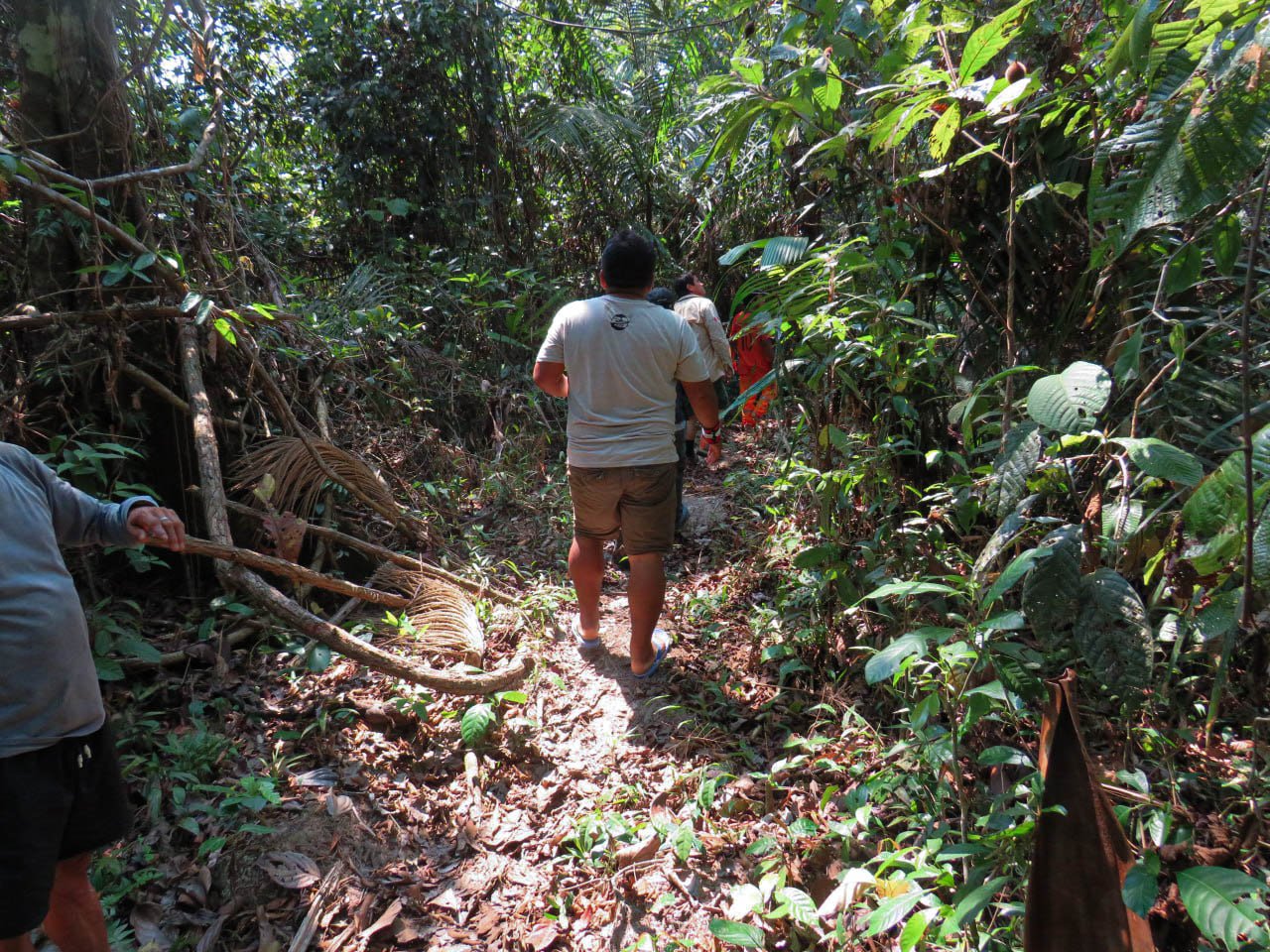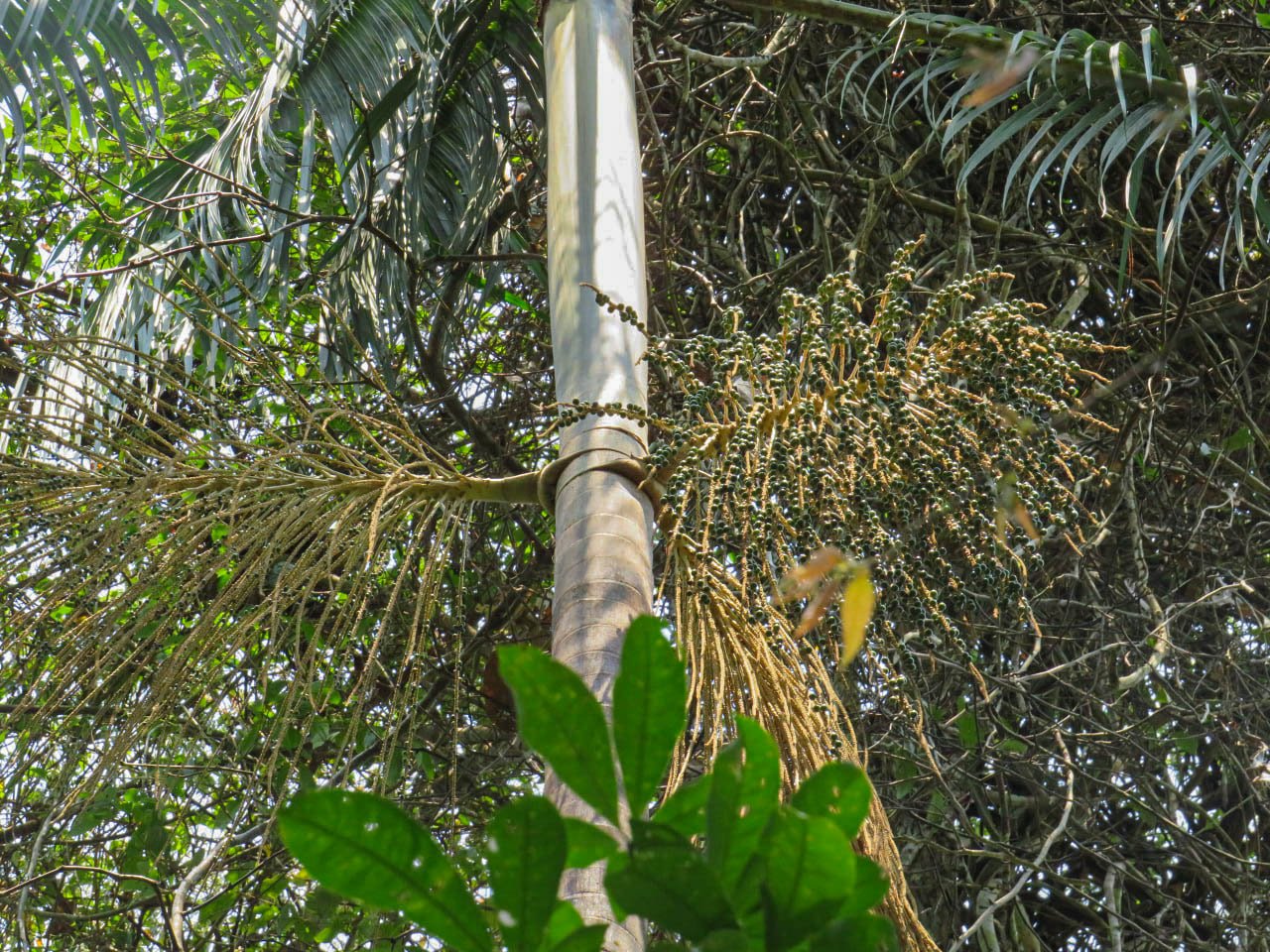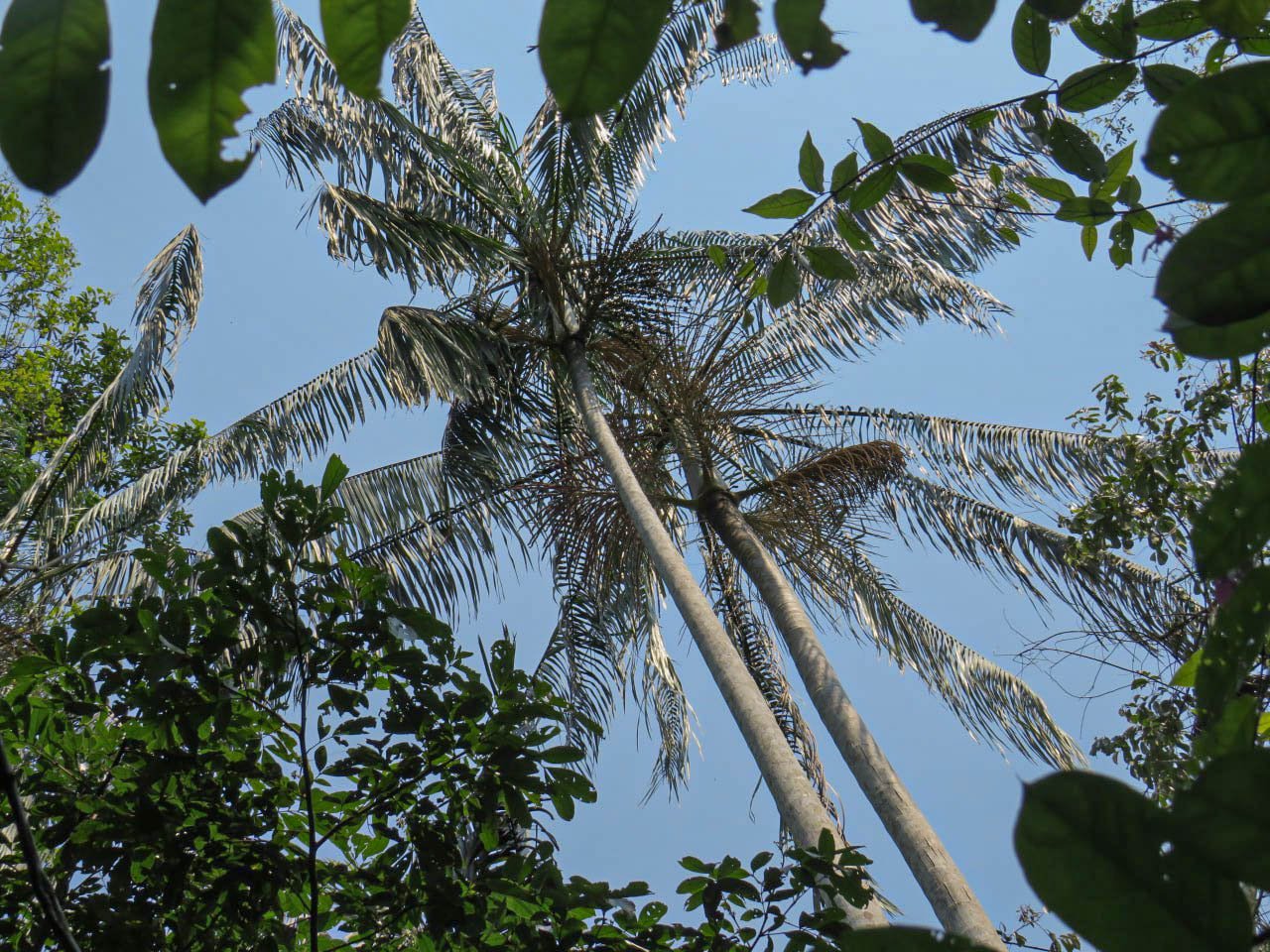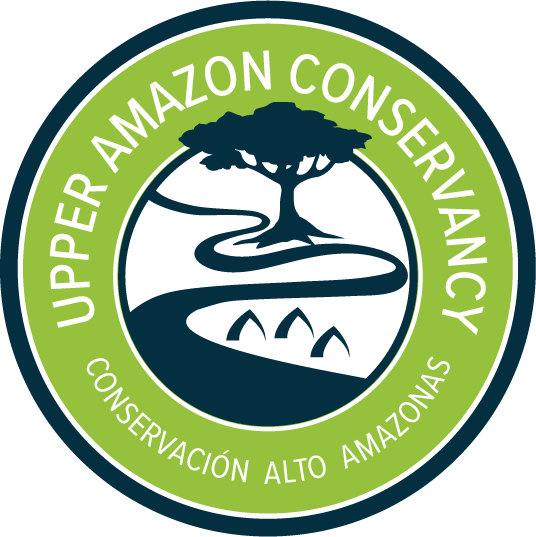Santa Rosa Residents Strengthen Initiative for Sustainable Management of Açaí Fruit
UAC Field Coordinator, Bryan Vilcatoma, and Alto Purus Park Guard, Gabriel del Aguila survey Indigenous lands for Açaí palm trees.
Santa Rosa Indigenous Community, Yurua River, Peru, September 24, 2024 — A new collaborative initiative between local communities, Peru’s National Parks Service (SERNANP), and UAC is evaluating the potential of fruit from the Açaí palm (Euterpe precatoria) as a new source of income for the six tribes and 17 communities of Peru’s remote Yurua region. Açaí has become an important resource for communities downstream in Acre, Brazil, and is exported around the world, but it has not been commercially harvested on the Peruvian side of the border. Funding is being provided by a UAC grant from the United States Fish and Wildlife Service (USFWS).
“We need opportunities as a community, and we have sought out allies in SERNANP and UAC to identify the Açaí groves. We are committed to continuing the census to know how many tons we can harvest,” stated Fernando Aroni, chief of the Santa Rosa community and newly elected president of the Yurua’s Indigenous federation, ACONADIYSH.”
During the survey, a detailed count of palm trees was carried out, prioritizing areas with the highest concentration of this species. Participants included Aroni and other Amahuaca tribespeople from Santa Rosa, members of UAC’s technical team, Bryan Vilcatoma and Máximo Pérez, and Alto Purus National Park guard Gabriel del Águila.
Açaí, or Huasai in Spanish, is not only a vital food source —its pulp is used for beverages— but also has medicinal properties, especially its root, which is used to treat kidney problems. Additionally, this resource attracts local wildlife, contributing to the biodiversity and sustainability of the ecosystem.
“It is essential to avoid poor practices during acai fruit harvesting. We are implementing new collection methods, such as safe climbing techniques, to prevent indiscriminate felling,” noted Gabriel del Águila.”
Several significant palm groves were located during the initial fieldwork; however, the community members and technicians recognize the need to cover more areas to complete a full mapping of Açaí within a few hours' walk from the Santa Rosa village. The study’s aim is to implement sustainable management strategies that will benefit the community in the long term.
The technical experience was led by del Águila, who has extensive knowledge in natural resource management and uses methodologies already implemented in other areas that buffer the Alto Purus National Park.
This collaboration marks a crucial step toward economic autonomy for the community, ensuring the sustainable use of resources and the well-being of future generations. These types of collaborations are essential not only for preserving local populations of Açaí but also for promoting sustainable development that respects local traditions, culture, and future needs.







